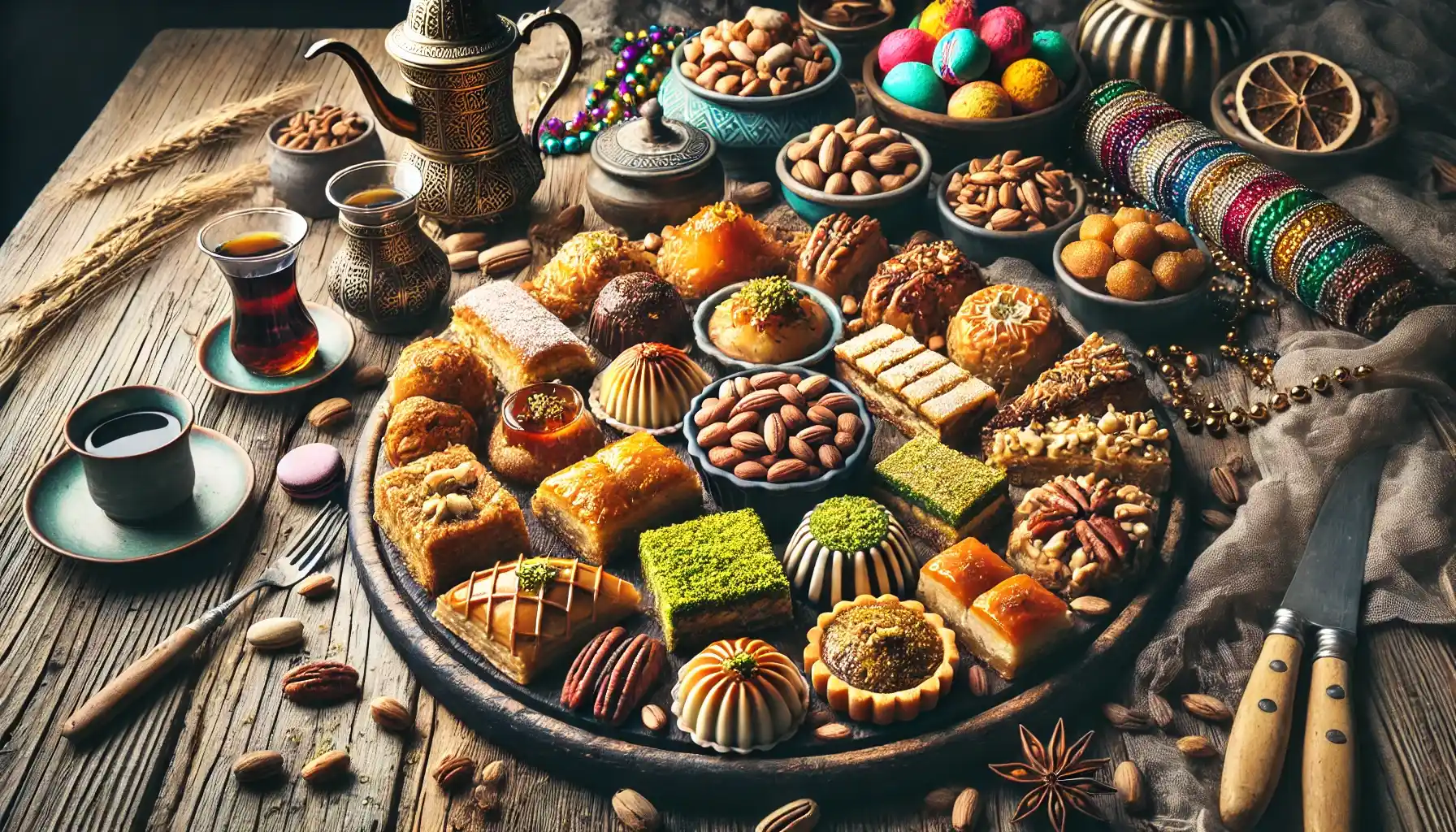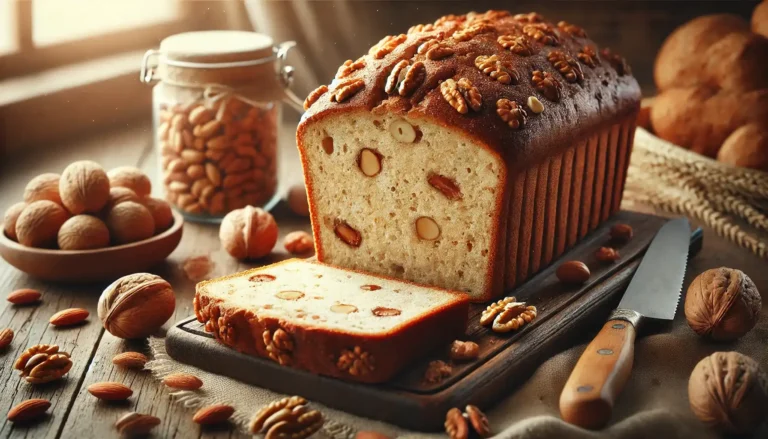Global and Regional Desserts: A Sweet Journey Around the World
Global and Regional Desserts: A Sweet Journey Around the WorldDesserts have a remarkable ability to bring people together, transcending cultural boundaries and pleasing taste buds across continents. Whether you are interested in classic pastries from Europe or you crave a dash of spice in your sweet treats, there is always an exciting dessert waiting to be discovered. In this article, we will delve into Global and Regional Desserts, exploring their uniqueness and cultural significance. We’ll also take a quick look at Turkish Cuisine Desserts, Cajun Desserts, Cajun Food Desserts, and even embark on an Egyptian Dessert Safari. Get ready to indulge your sweet tooth in the most delightful way.
Table of Contents
Why Explore Global and Regional Desserts?
Desserts are more than just sugary bites of happiness. They can reveal a great deal about the history, culture, and values of the regions that create them. When you taste a dessert from a specific country or community, you are essentially experiencing a piece of that place’s identity.
Exploring desserts from around the globe can also lead to increased culinary knowledge. You may learn about ingredients that are grown locally, historical events that shaped the desserts’ flavors, or special cooking techniques that have been passed down through generations. In short, Global and Regional Desserts can offer both a sweet treat and a meaningful educational experience.
Fascinating Varieties of Desserts Across Continents
Desserts from the Americas
In North America, desserts range from hearty pies to comforting puddings. Apple pie in the United States, for instance, stands as a symbol of American tradition. Across the border, Canada is famous for its butter tarts—sweet pastries with a gooey center.
South America’s dessert scene is equally intriguing. Classic flan is popular in many Latin American countries, while dulce de leche takes center stage in Argentina, turning up in everything from cookies to cakes. If you’re ever craving a sugar rush, Latin American desserts deliver big flavors with just a few ingredients.
European Sweet Traditions
Europe boasts a rich heritage of baking, confectionery, and chocolate-making. In France, delicate pastries such as croissants and macarons have gained global admiration. Italy brings its own flair with creamy tiramisu and refreshing gelato, both of which have become beloved treats worldwide.
Germany, Austria, and Switzerland shine in the realm of cakes and chocolates. From the renowned Sachertorte in Vienna to artisanal Swiss chocolates, Europe consistently gives birth to some of the most iconic desserts known to humankind.
The Middle East and Africa
Middle Eastern desserts often blend fragrant spices, nuts, and sweet syrups. Baklava, a layered pastry filled with nuts and drizzled with syrup, is a prime example of the region’s sweet offerings. Africa’s dessert landscape, on the other hand, is vast and varied. Fresh tropical fruits, honey-based treats, and fluffy beignets can be found across the continent, highlighting a culinary tapestry that is both vibrant and deeply rooted in tradition.
Asia: A Tapestry of Flavors
Asian desserts are incredibly diverse, showcasing the continent’s vast geography and multicultural influences. In East Asia, bean pastes, rice flours, and gentle sweetness define many confections. Mochi, for example, is a popular Japanese sweet treat made from pounded rice, while Chinese mooncakes are traditionally filled with lotus seed paste.
In South Asia, desserts are often based on dairy, sugar, and aromatic spices. Indian sweets, such as gulab jamun and rasgulla, present a burst of sweetness balanced by subtle flavors like cardamom. Southeast Asia, meanwhile, uses coconut milk, sticky rice, and tropical fruits to produce refreshing and delightfully sweet creations.
A Closer Look at Cultural Dessert Practices
Turkish Cuisine Desserts: A Taste of History
Turkish Cuisine Desserts have a long, storied tradition, influenced by the Ottoman Empire’s vast reach. Baklava is arguably Turkey’s most iconic dessert, though it is also enjoyed throughout the Middle East and beyond. Lokum, better known as Turkish delight, offers a soft, chewy texture and often comes flavored with rosewater or citrus essence.
From the whipped semolina dessert called “halva” to fruit-based treats like quince dessert, Turkish dessert culture shines with creativity and depth. Many of these sweet delights are traditionally served alongside strong Turkish coffee or tea, highlighting Turkey’s culture of hospitality and communal dining.
Cajun Desserts: Spicy Meets Sweet
Hailing from the southeastern regions of the United States, Cajun Desserts and Cajun Food Desserts embody the spirit of Louisiana’s rich cultural heritage. The Cajun people, descendants of French settlers in the Acadia region, combined French baking techniques with local ingredients. One classic dessert is the king cake, particularly enjoyed during Mardi Gras. It features a cinnamon-infused dough decorated with colorful icing, making it both a visual and culinary celebration.
Bread pudding is another mainstay in Cajun cuisine, often drizzled with a decadent whiskey or rum sauce. Pralines made from sugar, butter, and pecans are also a beloved treat, reflecting the French roots merged with local flavors.
Egyptian Dessert Safari: Ancient Inspiration
An Egyptian Dessert Safari promises a unique sweet journey influenced by centuries of history. Ancient Egyptians were among the first civilizations to use honey as a sweetener, which laid the foundation for many traditional confections. One key ingredient in modern Egyptian desserts is date paste, used in pastries like maamoul—a stuffed cookie also popular in other Middle Eastern nations.
Kushari, though primarily a savory dish, has sweet variations that fuse rice and lentils with caramelized onions and spices. Popular dessert beverages like sweet hibiscus tea (karkade) and sugarcane juice (asab) showcase how Egyptians turn to nature’s offerings to craft desserts that are both refreshing and full of flavor.
A Quick Comparison of Regional Desserts
Below is a brief table comparing various dessert highlights from different regions. From preparation methods to main ingredients, each region’s dessert culture has something special to offer.
| Region | Popular Desserts | Key Ingredients | Notable Flavor Profile |
|---|---|---|---|
| North America | Apple pie, Butter tarts, cheesecake | Apples, Butter, Sugar | Sweet, buttery, comforting |
| South America | Flan, Dulce de leche | Milk, Sugar, Caramel | Creamy, smooth, slightly caramel |
| Europe | Tiramisu, Macarons | Mascarpone, Almond flour | Rich, creamy, delicate |
| Middle East | Baklava, Lokum | Phyllo pastry, Nuts, Syrup | Honeyed, nutty, aromatic |
| Africa | Tropical fruit-based desserts, Moroccan shebakia | Fruits, Honey, Spices | Fruity, sweet, mildly spiced |
| Asia | Mochi, Gulab Jamun | Rice flour, Milk, Sugar | Soft, sweet, lightly scented |
| Cajun Region | King cake, Pralines, Bread pudding | Sugar, Butter, Pecans, Cinnamon | Sweet, spiced, indulgent |
| Turkey | Baklava, Halva, Lokum | Semolina, Nuts, Rosewater | Sweet, floral, rich |
| Egypt | Maamoul, Sweet Hibiscus Tea | Dates, Honey, Hibiscus | Earthy, syrupy, refreshing |
Tips for Enjoying Global and Regional Desserts
- Stay Open-Minded
Try new flavors and ingredients you may not have experienced before, such as floral waters, tropical fruits, or unique spices. - Pair Wisely
Match desserts with suitable beverages to enhance flavors. For example, pair Turkish baklava with strong coffee or sample Cajun bread pudding with hot tea. - Mind the Sweetness Level
Some cultures favor more sugar than others, so be prepared for varying degrees of sweetness in your explorations. - Ask About Traditions
When traveling, inquire about the dessert’s origin or cultural significance. You may learn interesting facts and stories, making each bite more memorable. - Attempt Homemade Versions
Recreate simple recipes at home. Start with easy-to-prepare treats like flan or rice puddings, then gradually tackle more complex desserts.
Where to Learn More
For those eager to dive deeper into Global and Regional Desserts, many culinary schools and cultural institutions offer workshops or cooking classes. Participating in these hands-on experiences can enhance your appreciation for each dish’s heritage and unique techniques. If you’re more of an online learner, you can explore resources such as TasteAtlas Desserts, which provides insightful overviews and historical backgrounds for a variety of sweets worldwide.
Finally, traveling to these regions—whether physically or virtually—is one of the best ways to savor authentic desserts. When the opportunity arises, consider a trip that allows you to experience Turkish Cuisine Desserts in Istanbul or try out the Cajun Food Desserts in Louisiana. You might even embark on an Egyptian Dessert Safari and discover ancient influences hidden in every recipe.
Embrace a World of Sweet Adventure
As you explore Global and Regional Desserts, you will find that each sweet treat carries its own tale of heritage, innovation, and love for food. Whether you gravitate toward the buttery, comforting desserts of the Americas or prefer the delicate pastries of Europe, your taste buds are bound to encounter something exciting. Don’t forget the myriad flavors from the Middle East, Africa, and Asia, each boasting its own magical combination of ingredients.
Remember to keep your mind open and your palate ready. Desserts can be more than just indulgence—they can serve as bridges connecting us to one another’s cultures and centuries-old traditions. The world is filled with sweet possibilities, so treat yourself to a flavorful adventure and let your dessert journey begin!







